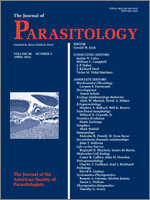Despite the great effort that has been given to control the disease, schistosomiasis remains the most important human helminth infection in terms of morbidity and mortality. Natural infection of schistosomes induces very little protective immunity against reinfection. Moreover, effective schistosome vaccines for practical use have not been developed. These parasites appear to have evolved highly effective modulatory mechanisms on their host's immune system that promote the parasites' survival and also hinder the development of effective strategies for treatment of the disease. Understanding of the mechanisms of schistosome-mediated immune modulation would be most helpful in schistosomiasis prevention and control. Previously, we have identified from Schistosoma japonicum an anti-inflammatory protein, Sj16, which suppresses thioglycollate-induced peritoneal inflammation in BALB/c mice, as well as thioglycollate-mediated peritoneal macrophage maturation, while modulating cytokine and chemokine production from peritoneal cells. In the present study, we have further investigated the modulatory effect of Sj16 on the host's adaptive immunity to heterologous antigens with the use of recombinant Sj16 (rSj16) expressed and purified from Escherichia coli. Results from this study indicate that rSj16 significantly suppresses antibody production, in addition to Th1 and Th2 responses to heterologous antigens in the BALB/c mouse model. Our study also reveals that rSj16 suppresses lipopolysaccharide-induced major histocompatibility complex II expression and IL-12 production, while increasing IL-10 production in resident peritoneal macrophages. These results may partially explain why parasite-related antigens cannot mount a protective immunity during early stages of schistosome infection.
How to translate text using browser tools
1 April 2012
Suppression of Adaptive Immunity to Heterologous Antigens by SJ16 of Schistosoma japonicum
Shaomin Hu,
Linlin Yang,
Zhongdao Wu,
Chung Sing Wong,
Ming Chiu Fung
ACCESS THE FULL ARTICLE

Journal of Parasitology
Vol. 98 • No. 2
April 2012
Vol. 98 • No. 2
April 2012




